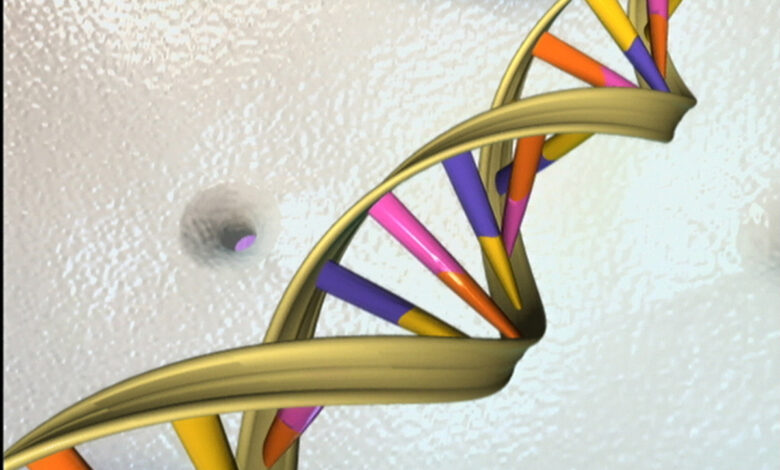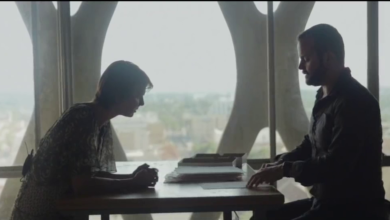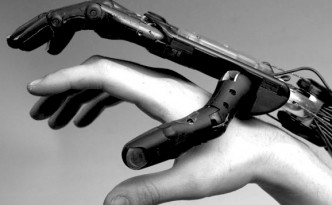
In 2011, as part of an investigation she conducted into the possible genetic origins of the streak of depression that ran through her family, the Danish neurobiologist Lone Frank had her genome sequenced and interviewed many participants in the newly-opening field of genomics that followed the first complete sequencing of the human genome. In her resulting book, My Beautiful Genome, she commented on the “Wild West” developing around retail genetic testing being offered to consumers over the web. Absurd claims such as using DNA testing to find your perfect mate or direct your child’s education abounded.
This week, at an event organized by Breaking the Frame, New Zealand researcher Andelka M. Phillipspresented the results of her ongoing study of the same landscape. The testing is just as unreliable, the claims even more absurd – choose your diet according to your DNA! find out what your superpower is! – and the number of companies she’s collected has reached 289 while the cost of the tests has shrunk and the size of the databases has ballooned. Some of this stuff makes astrology look good.
To be perfectly clear: it’s not, or not necessarily, the gene sequencing itself that’s the problem. To be sure, the best lab cannot produce a reading that represents reality from poor-quality samples. And many samples are indeed poor, especially those snatched from bed sheets or excavated from garbage cans to send to sites promising surreptitious testing (I have verified these exist, but I refuse to link to them) to those who want to check whether their partner is unfaithful or whether their child is in fact a blood relative. But essentially, for health tests at least, everyone is using more or less the same technology for sequencing.
More crucial is the interpretation and analysis, as Helen Wallace, the executive director of GeneWatch UK, pointed out. For example, companies differ in how they identify geographical regions, frame populations , and the makeup of their databases of reference contributions. This is how a pair of identical Canadian twins got varying and non-matching test results from five companies, one Ashkenazi Jew got six different ancestry reports, and, according to one study, up to 40% of DNA results from consumer genetic tests are false positives. As I type, the UK Parliament is conducting an inquiry into commercial genomics.
Phillips makes the data available to anyone who wants to explore it. Meanwhile, so far she’s examined the terms of service and privacy policies of 71 companies, and finds them filled with technology company-speak, not medical information. They do not explain these services’ technical limitations or the risks involved. Yet it’s so easy to think of disastrous scenarios: this week, an American gay couple reported that their second child’s birthright citizenship is being denied under new State Department rules. A false DNA test could make a child stateless.
Breaking the Frame’s organizer, Dave King, believes that a subtle consequence of the ancestry tests – the things everyone was quoting in 2018 that tell you that you’re 13% German, 1% Somalian, and whatever else – is to reinforce the essentially racist notion that “Germanness” has a biological basis. He also particularly disliked the services claiming they can identify children’s talents; these claim, as Phillips highlighted, that testing can save parents money they might otherwise waste on impossible dreams. That way lies Gattaca and generations of children who don’t get to explore their own abilities because they’ve already been written off.
Even more disturbing questions surround what happens with these large databases of perfect identifiers. In the UK, last October the Department of Health and Social Care announced its ambition to sequence 5 million genomes. Included was the plan to being in 2019 to offer whole genome sequencing to all seriously ill children and adults with specific rare diseases or hard-to-treat cancers as part of their care. In other words, the most desperate people are being asked first, a prospect Phil Booth, coordinator of medConfidential, finds disquieting. As so much of this is still research, not medical care, he said, like the late despised care.data, it “blurs the line around what is your data, and between what the NHS was and what some would like it to be”. Exploitation of the nation’s medical records as raw material for commercial purposes is not what anyone thought they were signing up for. And once you have that giant database of perfect identifiers…there’s the Home Office, which has already been caught using the NHS to hunt illegal immigrants and DNA testing immigrants.
So Booth asked this: why now? Genetic sequencing is 20 years old, and to date it has yet to come close to being ready to produce the benefits predicted for it. We do not have personalized medicine, or, except in a very few cases (such as a percentage of breast cancer) drugs tailored to genetic makeup. “Why not wait until it’s a better bet?” he asked. Instead of spending billions today – billions that, as an audience member pointed out, would produce better health more widely if spent on improving the environment, nutrition, and water – the proposal is to spend them on a technology that may still not be producing results 20 years from now. Why not wait, say, ten years and see if it’s still worth doing?
Illustrations: DNA double helix (via Wikimedia)
Wendy M. Grossman is the 2013 winner of the Enigma Award. Her Web site has an extensive archive of her books, articles, and music, and an archive of earlier columns in this series. Stories about the border wars between cyberspace and real life are posted occasionally during the week at the net.wars Pinboard – or follow on Twitter.




